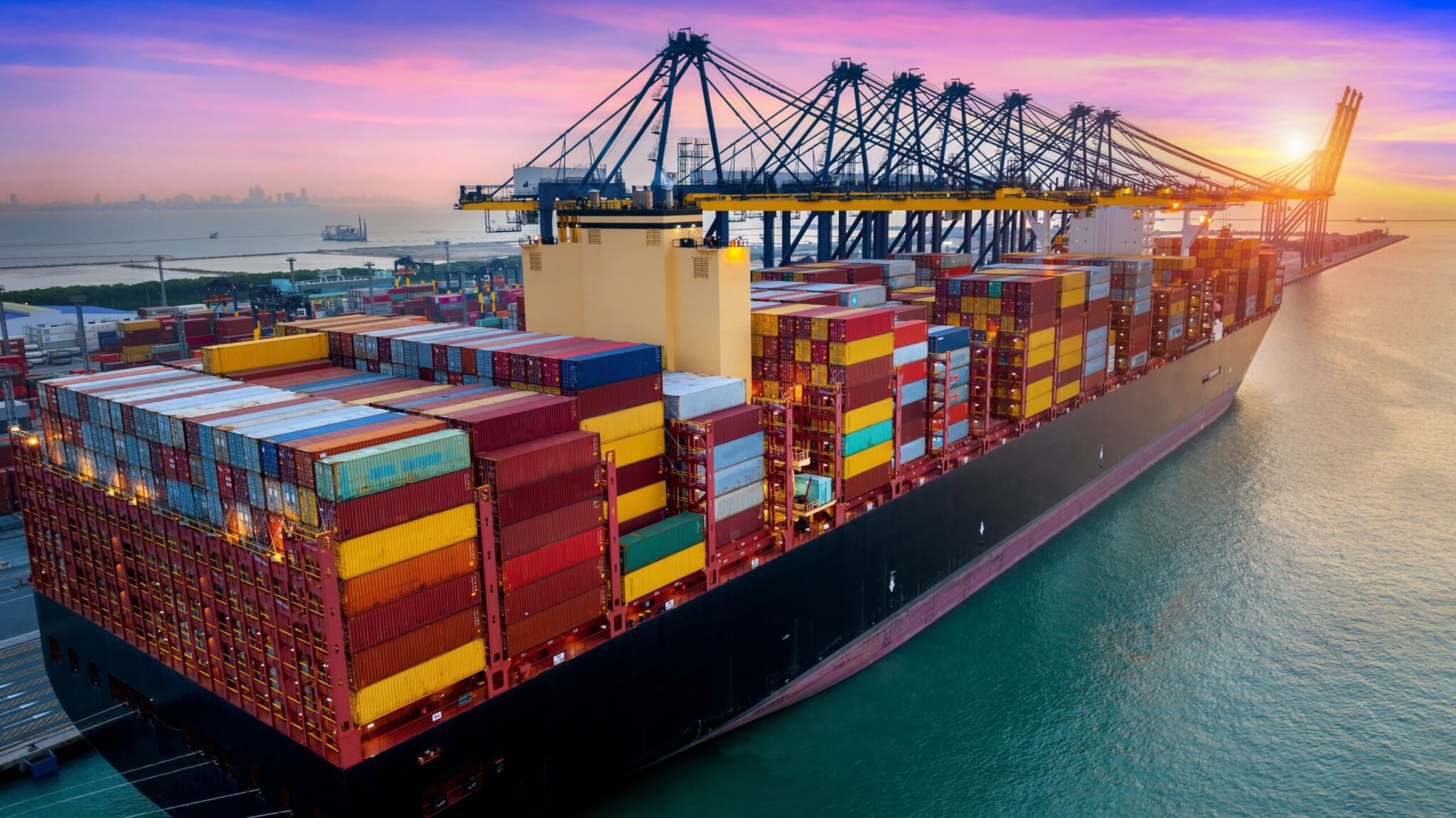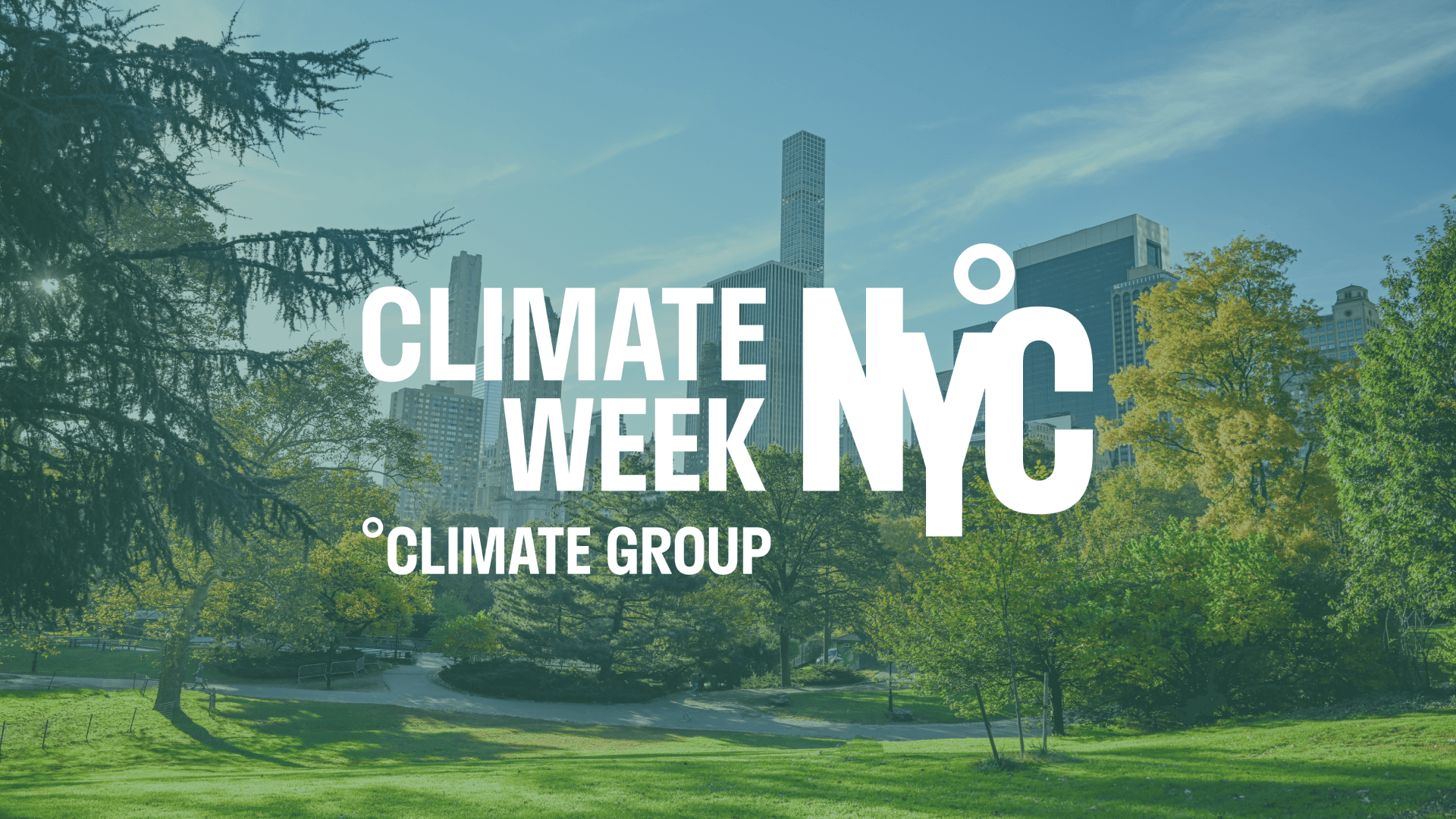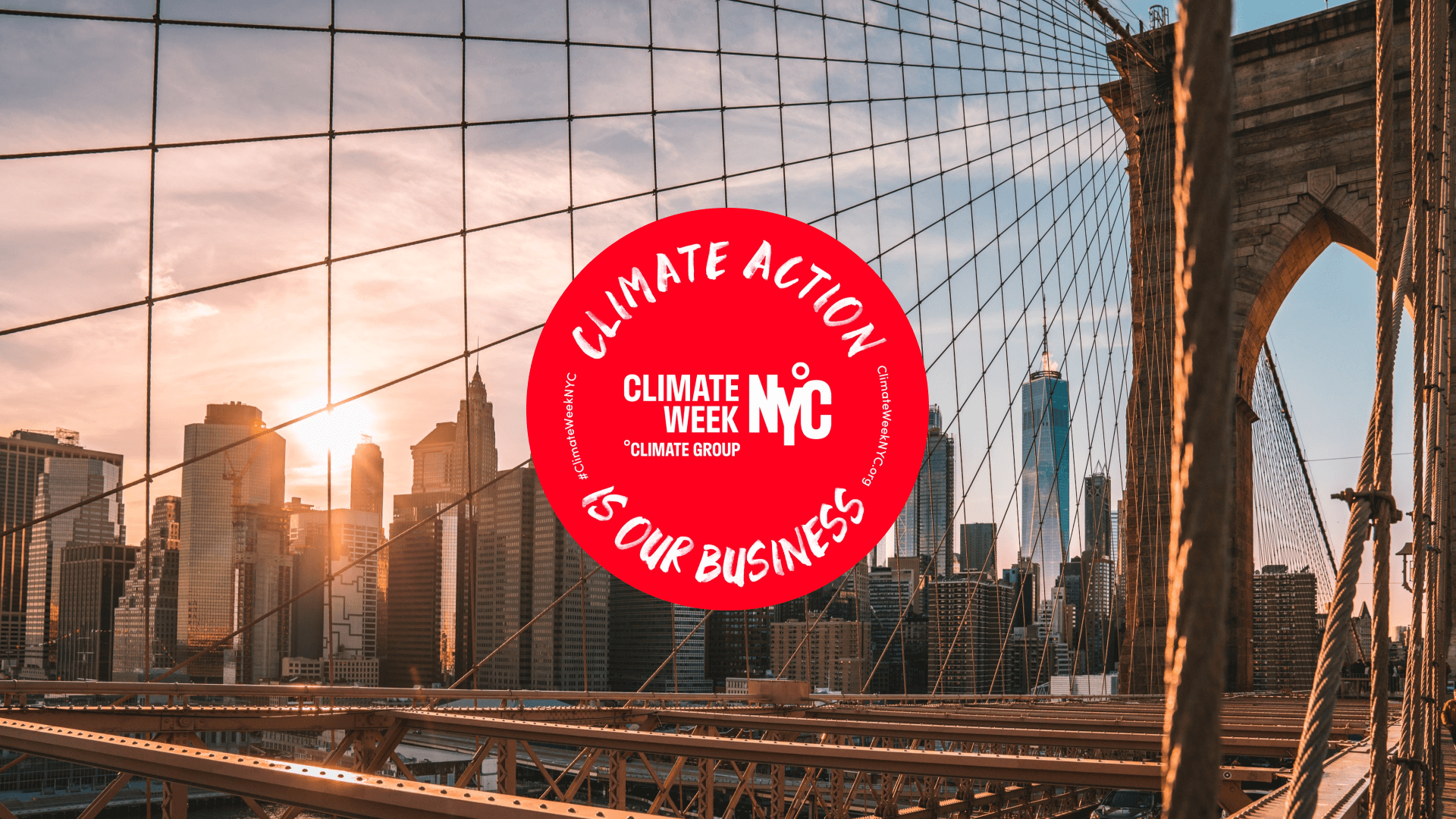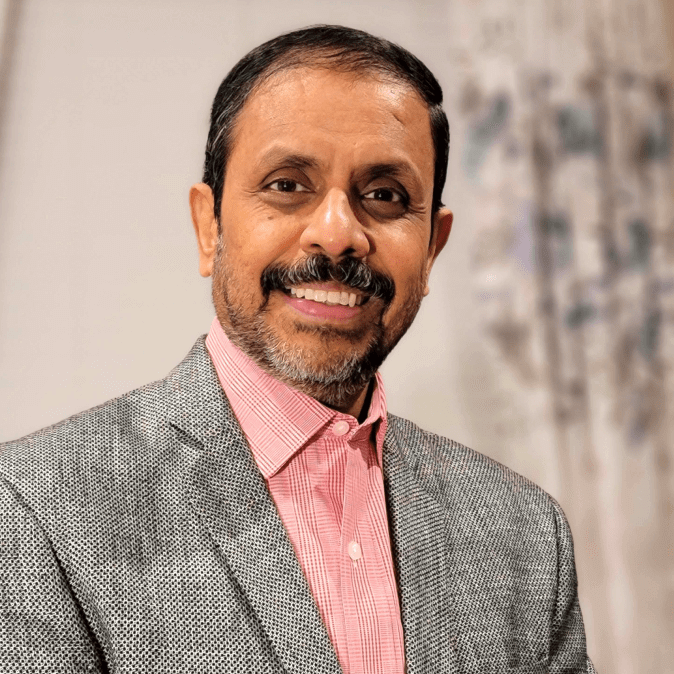
Consumption, or rather the excess of it, is one of the most difficult topics to address in the age of the climate crisis, as the consumption of goods, services, and leisure is often overlooked as a major contributor to personal emissions. A recent report by the Hot or Cool Institute highlights the massive gap between the magnitude of overconsumption in Western nations and the level of consumption that is consistent with limiting global warming to 1.5° C, the most ambitious target under the Paris Agreement.
The gap in consumption between wealthy countries of the Global North and the emerging economies of the Global South is not new, but after decades of perceived progress, the report notes that there still remains “observed inequality among countries, inequality within countries, inequality across races and between genders, and inequality across generations.” While there’s been a great recognition of the overconsumption among Western countries in recent years, the topic is yet to dominate conversations at global climate convenings such as COP26. The time is now to limit consumption and forge a new future.
Where we are now
To bring consumption habits in line with a safe climate, we need a value shift away from a material consumption economy and toward a well-being economy. Such an economy would foster a more just and equitable society where the quality of life is supported by factors like access to healthcare, education, and safe conditions, instead of individual consumption. We are far from this reality.
The consumption of goods, services, and leisure is strongly correlated with income levels. Low-income countries, such as India and Indonesia, have lower consumption, especially in terms of their leisure-related footprints. While middle-income countries focus spending on necessities such as clothing and household items, high-income countries like Canada have the greatest footprint in consumer goods and leisure.

The high carbon emissions from wealthier countries comes at the cost of the global ecosystem, as “consumerism by some can only exist if others are deprived of their own livelihoods.” The world’s richest 10% contributes to 36%-49% of global emissions, while the poorest 50% account for only 7%-15%. The poor, who are at a power disadvantage, disproportionately bear the impacts of climate change, raising the need for distributed systems to equally allocate resources to ensure equity not only on a global scale, but also within countries. World leaders will need to juggle emission reductions while uplifting hundreds of millions of people out of poverty in a shifting local economy.
The fair future we can build
Achieving global balance in emissions has become controversial, as the wealthy are challenged to shift away from their carbon-heavy lifestyles. However, systems change is needed to establish science-based limits and equitable distribution of the remaining stock of allowable emissions. According to IPCC’s Sixth Assessment Report, the remaining carbon budget for limiting global warming to 1.5° C equates to around 10 years of emissions at the current level. With not much time left, society needs to accelerate the transformation to low-carbon lifestyles.
A fair consumption space will require high-income countries to lead reduction efforts. The Hot or Cool Institute report estimates a 69%-82% footprint reduction from current levels is needed to reach a 2.5-ton of carbon emissions per capita benchmark by 2030. Upper-middle and lower-middle income countries will also need to partake in a 23%-50% reduction. The success of these efforts depends on a minimum of 95% adoption rate in all countries, which will require collective societal effort and governmental programs to enforce and allocate carbon budgets.
With many pathways to establish a fair baseline of consumption for all, the question is how to implement both systems and behavioral changes, as highlighted in our previous blog. System changes can include shifting to low impact consumption by taxing high emissions goods and services, while behavioral changes can cover areas such as car and air travel, meat consumption, and fossil-based energy usage. The report highlights the importance of multiple solutions working in tandem to achieve the 1.5° C target.
Philanthropy on consumption
The topic of curbing consumption is not going to get easier to address any time soon, but it’s through difficult dialogs that we can normalize notions about limiting consumption to shift us toward rebalancing the inequality across the globe and mitigating climate change. Philanthropy has a unique role to play by engaging in the following:
- Create and support spaces for policy and public consensus-building on fair consumption practices.
- Support research into regenerative economies that challenges the traditional economic growth mentality and centers people, equity, and justice.
- Tackle the harm perpetuated by the advertising industry by supporting narratives and communications that counteract the pervasive messages an average Western consumer is bombarded with on a daily basis to promote consumption.
The future desperately needs more innovative paths forward that showcase low-resource and less carbon-intensive opportunities to meet the population’s standard of living, rather than focusing on what will be lost in production-based limits. By boldly challenging unsustainable practices and institutions, reimagining alternatives, and learning and building new skills for sustainable living, governments, institutions, businesses, and individuals alike can transform socio-cultural norms for a brighter future.
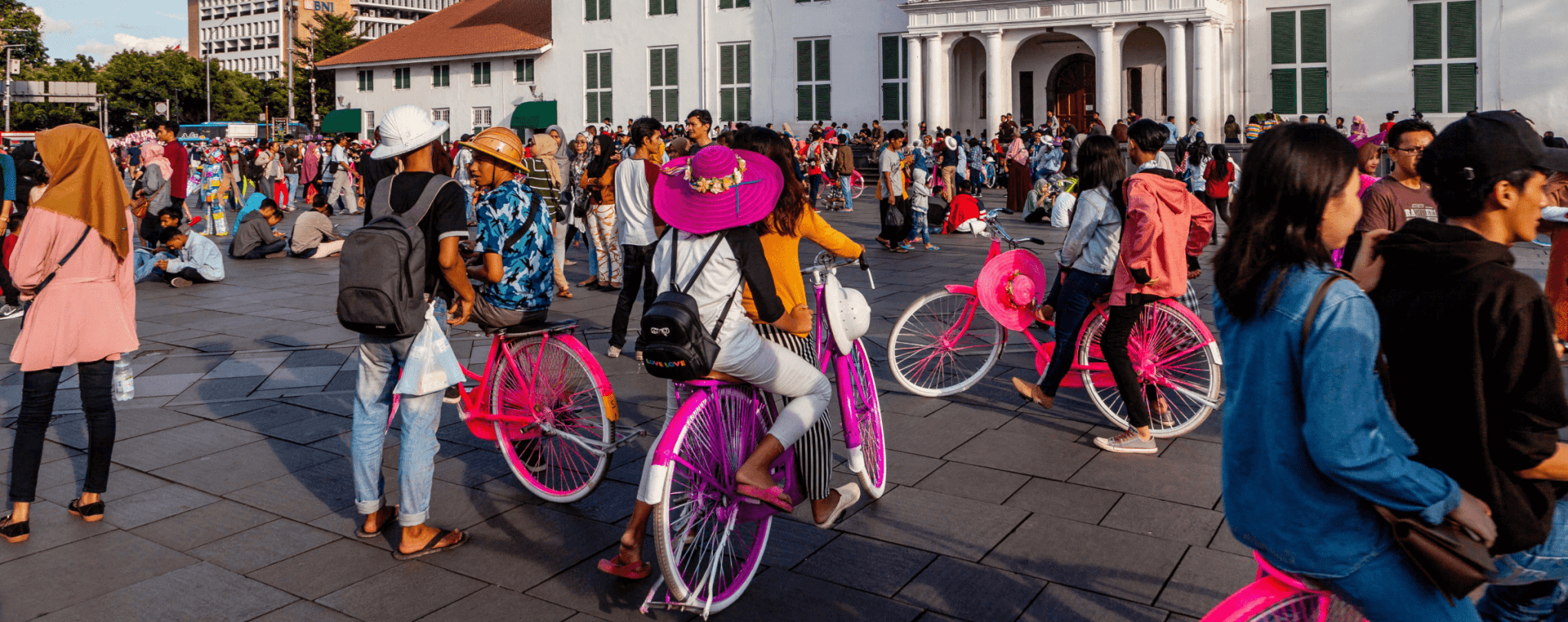
After an intensive strategy scoping exercise in collaboration with Indonesia-based civil society partners and other climate funders, ClimateWorks Foundation and the IKEA Foundation are launching a $12 million, three-year partnership to help accelerate climate action and philanthropic engagement in Indonesia.
A critical time for climate action. Despite the setbacks from Covid-19, this is an especially exciting time to be ramping up work on climate in Indonesia. While incumbent economic interests built around resource extraction and fossil fuels continue to exert their sway, the old paradigm that climate action and development are at odds is beginning to crumble. As trading partners, companies, and financiers around the world deepen their commitment to climate action, and the economics of renewables, EVs, and efficiency continue to improve, Indonesia is beginning to take serious steps on climate. Despite a decision not to increase the ambition of its 2030 NDC, Indonesia has advanced the timeframe for its net-zero target, planned how it will phase out its coal fleet, reduced its rate of deforestation for four years in a row, rolled out a modest carbon tax, and signaled that it is ready to be a leader on Electric Vehicles (EVs). Given the scale of Indonesia’s emissions and potential for further growth, supporting the experts and advocates working to turn this emerging ambition into sustained action is an absolutely essential part of the global response to climate change.
The new partnership will have a special focus on supporting ambitious, transparent, and measurable policy progress in the economic sectors that use the most energy — transportation, buildings, appliances, and heavy industries.
Early strategic priorities. At the highest level, the mission is to support Indonesia on its journey to net-zero emissions by midcentury through approaches that provide tangible benefits to Indonesian citizens, businesses, communities, and the environment. The new partnership will have a special focus on supporting ambitious, transparent, and measurable policy progress in the economic sectors that use the most energy — transportation, buildings, appliances, and heavy industries. These sectors currently do not receive philanthropic support commensurate with their emission reduction potential, and can also deliver tremendous benefits in terms of pollution reduction, improved health and comfort, climate resilience, and economic competitiveness. In tandem, the partnership will seek to elevate the role of the national and international business and investment communities in demonstrating that a path of ambitious climate action is the best way for Indonesia to attract investment and jobs, reduce risk and boost competitiveness over the long term. Early strategic priorities were developed in collaboration with other climate funders supporting the transition to net-zero, and grantmaking will seek to align with and amplify the impact of partners’ efforts. Finally, in concert with other interested funders, the initiative will explore how to build a long-term, climate-focused organizational presence in the country that is led and governed by Indonesians for the benefit of Indonesia.
Leveraging ClimateWorks’ existing assets. This is an exciting opportunity for ClimateWorks to bring together its organizational assets to help the IKEA Foundation achieve results in a specific geography. ClimateWorks’ Global Programs, including Transportation, Finance, Clean Cooling, and Forests and Land Use are engaging with in-country partners to guide the strategy and develop project pipelines. ClimateWorks Global Intelligence played a key role in early scoping for the initiative and continues to provide a wealth of international expertise while supporting key workstreams focused on building a deadline-driven transition to net-zero emissions. Opportunities for south-south collaboration will continue to be explored in partnership with ClimateWorks’ programs focused on China and India. Finally, ClimateWorks’ commitment to collaboration with the larger funder community will allow us to learn from the in-country experience of peers, while aligning with and enhancing funder commitment to Indonesia going forward.
Helping build a thriving ecosystem. The stakes are high — a recently released assessment by Deloitte found that ambitious climate action across Southeast Asia as a whole can deliver economic benefits of $12.5 trillion by 2070 while inaction would result in losses of $28 trillion. Despite some lingering contradictions and blank spaces in Indonesia’s approach to addressing climate so far, climate leaders in Indonesia are optimistic about how positive shifts in finance, corporate risk perceptions, and policymaker ambition — coupled with rapidly declining costs for the technologies needed for the transition — are coming together to improve the likelihood of meaningful climate action in Indonesia. The IKEA Foundation and ClimateWorks are excited to contribute enabling resources so that the ecosystem necessary to achieve this transition can grow and thrive in the critical years ahead.
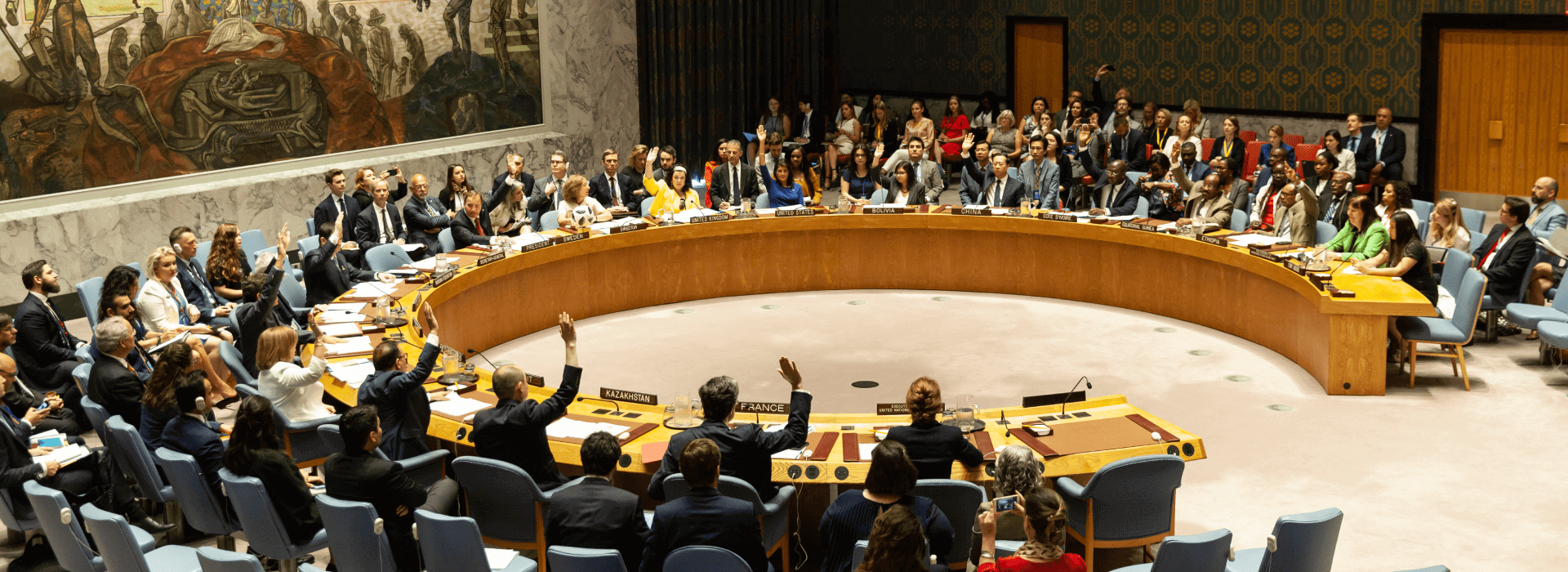
Decisive, critical, whatever you want to call it, the science is clearer than ever that urgent climate action is needed.
The Global Stocktake (GST) – the central ambition mechanism of the Paris Agreement – will kick off at COP26 and run through 2023. The GST mandates that we learn from the past, reviewing our collective efforts toward climate action every five years (see Decision 19). For the GST to be most effective, civil society needs to engage with its process and design now.
A golden thread of climate action
Finance is a critical enabler, a golden thread of climate action and therefore a key part of the GST. The ‘finance’ themes of the GST refer to both means of implementation and support – including technology transfer, capacity building and financial support – as well as the third long term goal of the Paris agreement: to make finance flows consistent with a pathway toward low-emission, climate resilient development. Climate-aligned finance is necessary to fund the deep transitions that will be required across all sectors of the economy, from renewables integration to resilient infrastructure upgrades, to the transition to climate-smart agriculture.
Simply put, without finance we cannot achieve the mitigation and adaptation goals of the Paris Agreement.
COP26 will need to resolve outstanding process points for the coming two years of the GST. We know the stocktake kicks off with an information gathering and then technical phase, followed up by a political phase. However, we don’t yet know how civil society can best offer input toward the GST. It is also uncertain what questions the United Nations Framework Convention on Climate Change (UNFCCC) subsidiary body chairs – in charge of developing ‘guiding questions’ to frame the stocktake – will pose to the stocktake.
It is imperative that civil society engages now with these issues. Do the current guiding questions really serve to fulfil the GST’s potential as a pacemaker, enhancing accountability and climate ambition? How can the finance themes influence a new climate finance goal (to be agreed upon in 2024) taking into consideration the balance between adaptation and mitigation and the priorities of developing countries?
Why civil society is needed now
There are two core reasons for civil society to engage now to support a successful stocktake within the finance themes of the GST:
- An active civil society can build convergence around tricky finance topics – civil society can directly influence the GST process through concrete inputs (however the process is ultimately designed), as well as support parallel discussions that advance topics with wide interpretations or topics that do not fit neatly into the UNFCCC discourse. Equity, for example, is one of two overarching principles of the stocktake. Yet, what success looks like when it comes to equitable access to climate finance and the ability of finance to meet the needs of developing countries could be better articulated. Loss and damage – referring to the economic and non-economic losses due to the adverse effects of climate change – is a crosscutting theme of the GST. The stocktake, at a minimum, will consider loss and damage in its technical dialogues, including those for finance. Civil society should work to overcome the challenges of measuring and monitoring loss and damage in the GST process, and thus advance the topic under the Paris Agreement.
- Civil society can bring together comparable data on finance themes – some key financing topics have the potential for wide reaching adaptation and mitigation impact, but in the absence of UNFCCC definitions and guidance, data reported by Parties to the GST are unlikely to give a sufficient view of collective progress. There is a long history on the ambiguous definition of climate finance that plagues accountability efforts. This ambiguity also plagues the ambition to make finance flows consistent with low-emission, climate resilient development pathways. Civil society can create comparable frameworks – such as those for climate-consistency in finance flows – that takes into account the unique context of a given country. This may ultimately aid measuring progress over time and generate more ambition than waiting for guidance from the official process.
Civil society must lean in if we want the GST to be effective at raising climate ambition. We need to engage collaboratively to address the data gaps and to build convergence on key ideas. If not, we risk splitting our attention among varied paths, instead of focusing all our resources on a single direction toward climate-resilient futures.
To stay updated on the work of the iGST and join the conversation, visit www.independentgst.org

After a year-long delay and months of lingering doubt that it would actually go forward, COP26 in Glasgow is imminent.
It is still anyone’s guess what it will feel like to be in and around the Scottish Events Center, but the momentum of a “normal” COP is increasingly in evidence — there are 25,000 people registered, organizations are planning events, and the focus has shifted to the usual considerations of how to make the outcomes associated with the conference as successful as possible.
Still, the vast inequities in global vaccine availability and the difficulties around travel and safety cast a large shadow. Delegates and observers from the Global South have been put in a terrible bind — they rely on the COP to be the engine of attention and action on climate solutions, but speaking with a diminished voice in those discussions is highly inequitable. ClimateWorks, in coordination with the Climate Emergency Coordination Group and other funders, has extended additional funding to those traveling to the COP to be able to defray additional costs due to flight rerouting, quarantines, and any emergency medical needs. We hope this will help reduce barriers in some measure.
As with previous COPs, the wide array of meetings and events includes everything from official negotiations among governments, to growing public pressure for climate action, official theme day events, side events, and more. This briefing includes below a summary of what to watch for over the coming weeks. You’ll also find a list of events sponsored by ClimateWorks and our partners, as well as links to official schedules that may provide some guidance.
What we are tracking at COP
A major pledge on methane reduction
COP26 will see the official launch of the Global Methane Pledge, which aims to cut methane emissions by 30% by 2030 and limit global warming by 0.2° C by 2050. The initiative is supported by over 20 philanthropies, including numerous ClimateWorks partners, that have pledged over $223 million to reduce methane emissions. Check out philanthropy day at the Methane Moment Pavilion on November 4, including from 13:00-14:00 to celebrate this progress.
A spotlight on road transportation
The U.K. COP26 presidency is highlighting the need for transportation electrification to meet Paris Agreement targets. The Zero Emission Vehicle Transition Council will meet on Transport Day (November 10) and is expected to launch the Glasgow Declaration on Zero-Emission Vehicles, which will be signed by governments, cities, regions, automakers, fleet owners, and other relevant stakeholders. These efforts are broadly aligned with the ClimateWorks-supported Drive Electric Campaign, and influenced by the strategy and advocacy of our partners.
Indigenous Peoples and local communities’ rights-based climate action
Leaders from Indigenous and local communities will be at COP26 calling for climate solutions that include their rights and tenure. In addition to commitments to halt and reverse deforestation by 2030, a major funding pledge to support Indigenous and local community land rights and tenure is expected.
Focus on climate finance
With the U.K. holding this year’s COP presidency, we expect that Prime Minister Boris Johnson will use the Global Leaders Summit convened on November 1-2 to convince world leaders to raise ambition and action toward net-zero emissions and 1.5° C targets, primarily through scaling up climate finance. The presidency will continue to push Johnson’s bid to secure ambition on climate finance on November 3 in a series of high-level events intended to secure new commitments on climate finance from private and public sector actors.
Meanwhile, in the Blue Zone, country delegates will be stepping up efforts to conclude negotiations on the Paris rulebook under Article 6 of the Agreement. At the top of the agenda will also be to review the goal of $100 billion per year in climate finance to be provided by wealthier nations (which is yet to be fulfilled). Perhaps the bigger finance story, though, is in the financial markets, where investors are converging on the trillions needed to shift every sector toward a net-zero emissions economy, and governments are taking responsibility for Paris-alignment of the financial markets — from Wall Street to Tokyo.
New and updated Nationally Determined Contributions
Countries are expected to deliver outstanding Nationally Determined Contributions announcing their emissions reduction targets to be achieved by 2030. We hope to see more countries announce targets of net-zero emissions by 2050, including more details on how such targets will be met.
The launch of the Global Stocktake
This year will see the first-ever Global Stocktake (GST), the formal process established under the Paris Agreement to periodically take stock of collective progress toward its long-term goals on climate change mitigation, adaptation, and finance.
To ensure that the Global Stocktake is as effective as possible, the Independent Global Stocktake (iGST), a consortium of civil society actors, will bring together the independent community to push together for a robust GST that empowers countries to take greater climate action.
Other side events
Adjacent to the negotiations will be the official side events, some of which we recommend, below. Outside the official Blue Zone, climate advocates will host numerous events to raise ambition and action, and to demonstrate innovative technologies to tackle climate change. The New York Times is putting on a series of fantastic events at its COP26 climate hub while the COP’s Green Zone, which is open to the public, will host a profusion of events, from planetarium exhibitions, musical and artistic performances, cinematic screenings, and talks, to mass protests.
Events and exhibitions to look out for
ClimateWorks at COP
Reimagining Climate Governance Networking Reception
Monday November 8, 2021, 17:00 – 19:30, Citation,Glasgow
ClimateWorks is hosting an evening reception with two leading thinkers on the present and future of our response to the climate crisis. The event will be an opportunity to meet with colleagues in philanthropy and partners to discuss the events of the COP and beyond. You can find more information here.
On the Road to COP 27: Achieving an Equitable Just Transition on the Road to COP 27 and Beyond (By Invitation Only)
Monday, November 8, 2021, 08:00-13:00, CitizenM Glasgow
Organized by the ClimateWorks Governance and Diplomacy initiative in collaboration with the Africa Group of Negotiators Expert Support team, the International Trade Union Confederation, the Pan African Climate Justice Alliance and Friedrich Ebert Stiftung, this side event will serve as an open participatory forum for Africa-focused non-governmental organizations to explore ways in which next year’s COP27 can deliver an enduring, just, and equitable transformation. The future summit is scheduled to be hosted by an African nation in November 2022. For more information, contact ClimateWorks Governance and Diplomacy program here.
Sustainable and Efficient Cooling for a Warming Planet: Challenges, Opportunities, and Solutions
Wednesday, 10 Nov 2021, 16:45—18:00, Multimedia Studio 3
As the planet warms, the need for sustainable cooling for all is growing. This event examines how the cooling sector can improve climate outcomes through end-of-life disposal of hydrofluorocarbons, improved efficiency, and increased speed and ambition to phase out high global warming refrigerants.
Speakers will include ministers from Japan, France, Moldova, Vietnam, and Rwanda, and representatives from the Institute for Governance and Sustainable Development, U.N. Environment Programme (ED) and GREE.
Integrating Short-Lived Climate Pollutants into Climate Action
Wednesday, 10 Nov 2021, 16:45—18:00, Multimedia Studio 2
This session will focus on the importance of integrating Short-Lived Climate Pollutants in the implementation of the Paris Agreement and the Sustainable Development Goals, particularly the phasedown of black carbon and reducing methane by 45% to stay on a safe path to achieving 1.5⁰ C. Speakers will include Cherono Sego from ClimateWorks, Drew Shindell of the Climate and Clean Air Coalition (CCAC), Her Excellency Rachel Ruto of the Republic of Kenya, Her Excellency Samira Bawumia of the Republic of Ghana, UNEP, and the World Biogas Association.
Building an inclusive Global Stocktake: How civil society can help assess climate progress
Thursday, 11 Nov 2021 16:45—18:00, Multimedia Studio 2
The Global Stocktake is a key mechanism to raise ambition across mitigation, adaptation, and finance, and in light of equity and the best available science. Non-party inputs can help build up the political momentum within the GST to trigger nationally enhanced ambition. Organized by the ClimateWorks-convened Independent Global Stocktake, this event will feature speakers from the University of Maryland, Council on Energy, Environment and Water, UNEP DTU Partnership, Indian Institute of Management Ahmedabad, Overseas Development Institute, Imperial College, University of Cape Town, Climate Equity Reference Project, World Resources Institute, and Iniciativa Climática De México.
###
Click here to see other exciting events from our global network of partners and grantees. We’ll update this list throughout COP26, so be sure to check back.
India is among the countries worst impacted by Covid-19 in terms of lost lives and livelihoods. A steep fall in economic growth, jobs, investments, and government revenue coincided with the impact of runaway climate change. Thus, for India, a country with 16% of the world’s population (1.3 billion), recovering from the impact of Covid-19 is several times more challenging in comparison to other countries.
Despite the challenge, the Indian government has continued to focus on the invisible threat of climate change alongside strengthening the country’s health and social infrastructure and initiating the world’s biggest vaccination program. India’s vaccination drive is deploying more than 20 million doses a day, an unprecedented scale that led to the milestone achievement of 1 billion doses administered by October 21, 2021. As one of the largest developing economies, India faces the challenge of balancing its development goals with climate imperatives, and this article seeks to highlight the country’s efforts and commitment towards clean energy transitions even during the pandemic. The global community has a vital role to play in strengthening these and the last section makes some suggestions.
Climate action at the center of Covid-19 recovery
India has placed sustainable development at the center of its recovery strategy, taking several steps toward building a sustainable economic future. New Delhi’s climate ambition and leadership provide a ready springboard for “building back better.” The milestone achievement of 100 GW of installed renewable energy capacity in Aug 2021 embodies this approach. India now stands fourth in the world in terms of installed renewable energy capacity — fifth in solar and fourth in wind.
Marking the occasion, PM Modi pledged India’s energy transitions to be ambitious and inspirational by enabling “new opportunities from green growth to green jobs…for start-ups and youth”. Additionally, on India’s 75th Independence Day, he called for energy independence by 2047 and announced a National Hydrogen Mission aimed at making India a global leader in green hydrogen production and export. Thus, spurring domestic innovation and manufacturing, attracting international investments, and enhancing employment opportunities form the bedrock of the government’s recent clean energy policy and regulatory and diplomatic initiatives.
The central government has also catalyzed state-level action. For instance, Gujarat released an assessment of the dramatic drop in the proportion of thermal power in the state’s energy generation (63% to 16% by 2030), as it aligns its strategy with the 450 GW national target. It is also setting up the world’s largest grid-scale battery storage plant. Bihar and Ladakh too have decided to become carbon neutral. Ladakh is working towards 10 GW of renewable energy capacity through wind and solar and is setting up India’s largest battery storage capacity of 50MWh.
In August 2021, the Indian government announced that it would ratify the Kigali Amendment enabling the phasing out of hydrofluorocarbons (HFCs). This decision is of global significance because HFCs — a set of greenhouse gases primarily used in cooling and refrigeration — are significantly more damaging to the climate than carbon dioxide and their phase-out could help avoid 0.5° Celsius in global temperature rise by the end of the century. The ratification will spur demand for more sustainable refrigerants, boost domestic manufacturing and local innovation, and create green jobs. This decision followed another marker in India’s leadership, the launch of the India Cooling Action Plan in 2019 — the first by any country— which laid the roadmap for improved energy efficiency and the transition to clean technologies.
Prime Minister Modi’s visit to the U.S. in September 2021 was marked by the announcement of significant ambitious climate targets. The cementing of the goal of 450 GW of renewable energy capacity by 2030 signaled a huge undertaking and commitment from the government, requiring a 350% increase from current levels over 10 years. India’s Energy Minister RK Singh further reinforced this by unveiling India’s Energy Compact at the High-Level Dialogue on Energy that was convened by the U.N.
The compact also commits to developing and implementing a National Hydrogen Energy Mission to scale up annual green hydrogen production to 1 MT by 2030 and a Production-Linked Incentive Scheme to add 10 GW of solar panel manufacturing capacity by 2025. It also emphasizes the role of the International Solar Alliance (ISA) in supporting other countries develop and scale solar power, create new jobs, and usher in investments. Other important commitments include achieving 15 million metric tonnes (MMT) capacity of compressed biogas by 2024, 20% ethanol blending in petrol by 2025-26, and enhancing energy efficiency in the agriculture, buildings, industry, and transport sectors, and promoting energy-efficient appliances and equipment.
Milestone policies and regulations supporting clean technologies
In addition to the significant policy announcements in August and September, the government took several other progressive steps. India approved a National Programme on Advanced Chemistry Cell Battery Storage with an outlay of nearly $2.6 billion over five years. This is an integral step toward transforming the country’s mobility and energy systems by creating a competitive battery manufacturing industry, given the estimations that the battery market could exceed $125 billion annually by 2030. Important amendments to the Faster Adoption and Manufacturing of Electric Vehicles (FAME II) program such as hiking incentives for electric two- and three-wheelers also promote the uptake of clean mobility.
India also introduced the Electricity Amendment Bill 2021 that includes far reaching reforms like offering consumers the choice of their electricity provider by de-licensing distribution, thereby removing barriers to entry of private players in the space. This will bring competition in the retail electricity sector. The bill also proposes a penalty for non-compliance with the Renewable Purchase Obligation.
Moreover, in an effort to boost the flow and quantum of green finance, India’s central bank joined the Central Banks and Supervisors Network for Greening the Financial System to share and learn best practices on climate risk assessment.
Augmenting the government’s efforts, Indian entrepreneurs and civil society followed suit. Outlining industry-specific measures, 24 private companies including the Tata Group, Reliance Industries, Mahindra and Mahindra, Dalmia Cement, and Adani Group committed to move toward carbon neutrality through energy efficiency, promoting renewables, green mobility, waste management, and recycling, among others. Some companies are investing heavily in developing green hydrogen projects in India.
Climate action through diplomacy and green partnerships
Two key initiatives, ISA and the Coalition for Disaster-Resilient Infrastructure (CDRI), are instrumental in mobilizing climate action, especially in developing countries. Climate diplomacy is increasingly central to India’s foreign policy agenda and has served as the basis for new and strengthened partnerships. The U.S.-India Climate and Clean Energy Agenda 2030 Partnership, launched in April 2021, and further detailed in the September meeting between Prime Minister Modi and President Biden, reaffirms the priorities of green and low-carbon development. India and the U.K., too, jointly launched the Climate Finance Leadership Initiative partnership entailing a $1.2 billion package of public and private investments in sustainable projects and renewable energy in India. While in the U.S., Prime Minister Modi had also forged a partnership with Australian Prime Minister Scott Morrison on low-emissions technology, with a focus on hydrogen and ultra-low-cost solar programs.
The role of the global community
As the 26th U.N. Climate Change Conference of the Parties (COP26) nears, there is growing consensus that the impact of climate change should be matched with an elevated pace of clean technology deployment, sustainable finance, and other decarbonization efforts. India’s clean energy transition is central to collective progress and therefore India’s sustainable growth is a shared goal of the international community. India is building the infrastructure and systems to support further action, domestically and internationally. These efforts could be enhanced through greater collaboration with, and ambition from the global community, in areas including:
- Explicitly recognizing India’s complex development needs, acute climate vulnerability, severe impacts of Covid-19, and competing priorities of scarce resources. These underscore the government’s imperatives of balancing several socio-political considerations with climate action
- Facilitating technological and financial support so that India achieves its ambitious Energy Compact goals. India’s target of 450 GW of renewable energy requires a cumulative investment of $221 billion (including associated transmission and storage systems) and presents a significant business opportunity. U.S. assurance to India in this regard is a welcome development.
- Sharing India’s imperatives of just transition and equitable development as central to partnerships on technology, finance, and research and development (such as in hydrogen, low-cost solar panels, electric vehicles, batteries).
- Fostering greater collaboration between Indian and global businesses on best practices as well as commercial engagement on clean technology and investment.
- Establishing greater financial and institutional support for ISA, CDRI and similar global initiatives. India’s leadership in positioning ISA as a global climate solution warrants more recognition, given its pivotal role catalyzing technology and financial flow for scaling green transitions in other developing countries.
- Supporting India’s access to critical supply chains for its ambitious energy transition goals through flexibility in trade, logistics. and flow of expertise.
Philanthropy (both domestic and international) has a critical role to play in all the above and its contribution, made in concert with the government efforts, has led to significant advances in building local institutional and technical capacity, providing technical assistance and research support to national, state and city governments in areas such as electric mobility, clean energy and cooling. However, while philanthropic funding in India has increased over the years and was estimated to be an annual average of $55 million between 2015 and 2020, it is grossly inadequate compared to the magnitude of the challenge.
This trend of increased yet inadequate philanthropic funding is mirrored at the global level. For instance, according to a recent report by ClimateWorks Foundation, despite an annual growth of 14% (2019-2020) in philanthropic giving to climate change mitigation, it still accounts for less than 2% of the total contributions. Therefore, there is an urgent need to scale overall financial flows including philanthropic funding, particularly to India, to implement the ambitious goals set for clean energy transitions.
The recent IPCC Working Group I report summarized the state of our climate in stark terms: We are on a disastrous climate pathway and immediate action is required to avoid a climate catastrophe.
There may have been a time in the past where removing legacy emissions from the atmosphere was not necessary to avoid the worst impacts of climate change, but that is not the case today. The IPCC WG1 report concludes with high confidence that some carbon dioxide removal (CDR) is essential to keeping temperatures from rising above 1.5 degrees Celsius of warming. The IPCC finding is broadly consistent with earlier scientific studies, including the National Academies and the UK Academy of Engineering.
As more attention turns to CDR as a potential solution to complement mitigation efforts, there is considerable work to be done to scale carbon removal strategies effectively and equitably. Carbon removal’s promise must be balanced with current limitations and developed in a way that supports environmental and climate justice priorities. For this, philanthropy can be a pivotal partner to private, public, and civil actors working to catalyze collaborative, inclusive approaches to carbon removal.
The Chan Zuckerberg Initiative’s climate commitment supports the responsible development of carbon removal. It is important that more resources are directed toward better understanding the opportunities and challenges associated with taking legacy carbon dioxide out of the air. As a grant recipient, we will use the funding to support research on scaling equitable carbon removal solutions as well as helping community-led, grassroots organizations engage on carbon removal.
ClimateWorks’ Carbon Dioxide Removal Program supports research and engagement on several natural, ocean, and technological climate solutions. Learn more about the program here.

2021 has so far been an unprecedented year for climate-related philanthropy, with the influx of multiple new billion-dollar-scale commitments. This upward trend appears to be a continuation from 2020, which saw climate change mitigation philanthropy grow by 14% compared to 2019, outpacing the 3% growth of overall global philanthropic giving.
The increased focus on social justice movements last year, and the growing understanding that equity and justice issues are deeply intertwined with climate change mitigation, also attracted more funding than has traditionally gone to equity and justice issues, with almost $500 million committed to racial justice by U.S. foundations in 2020. While these are encouraging developments, the grim news is that climate change mitigation still accounts for less than 2% of overall philanthropic giving, not nearly enough to address the rapidly growing intensity of the climate crisis. For all of the progress that’s been made, there’s still a long way to go. It’s crucial for philanthropy to step up now because money spent today on mitigating climate change and driving emissions to zero is far more productive than money spent later on to deal with the massive impacts of extreme climate events that used to happen once in a century but are now becoming more commonplace.
In our latest report, “Funding trends 2021: Climate change mitigation philanthropy,” we analyze data on philanthropic giving from foundations and individuals to climate change mitigation between 2015-2020, to help funders understand where funding is most needed, where it is going, how a funder’s strategies map to existing resources, what strategies other institutions may already be funding, emerging partnerships opportunities, and more.
The report captures broader trends that have influenced climate philanthropy in 2020, including the arrival of new large-scale donors and collaborative commitments as well as the growing emphasis on equity. To build greater accountability, we also track progress on philanthropic pledges made at the Global Climate Action Summit in 2018 and then updated in 2020. The good news is that philanthropy is so far on track to exceed those pledges by over 30%.
Philanthropy has both catalyzed and supported some of the biggest climate wins over the past decade that have helped bend the global temperature trajectory downward. Philanthropy must keep raising ambition, taking risks and accelerating climate progress, and continue creating inclusive ecosystems of change that bring together the public, private, and civil society sectors. Collaborative, investment-ready programs operating at scale already exist and are poised for immediate growth and impact. There are more ways than ever before for new and existing donors to join the cause or scale up their work.
The climate crisis requires your attention now.
Learn more
To learn more about key 2020 trends in climate change mitigation philanthropy, read “Funding trends 2021: Climate change mitigation philanthropy” or contact us.





